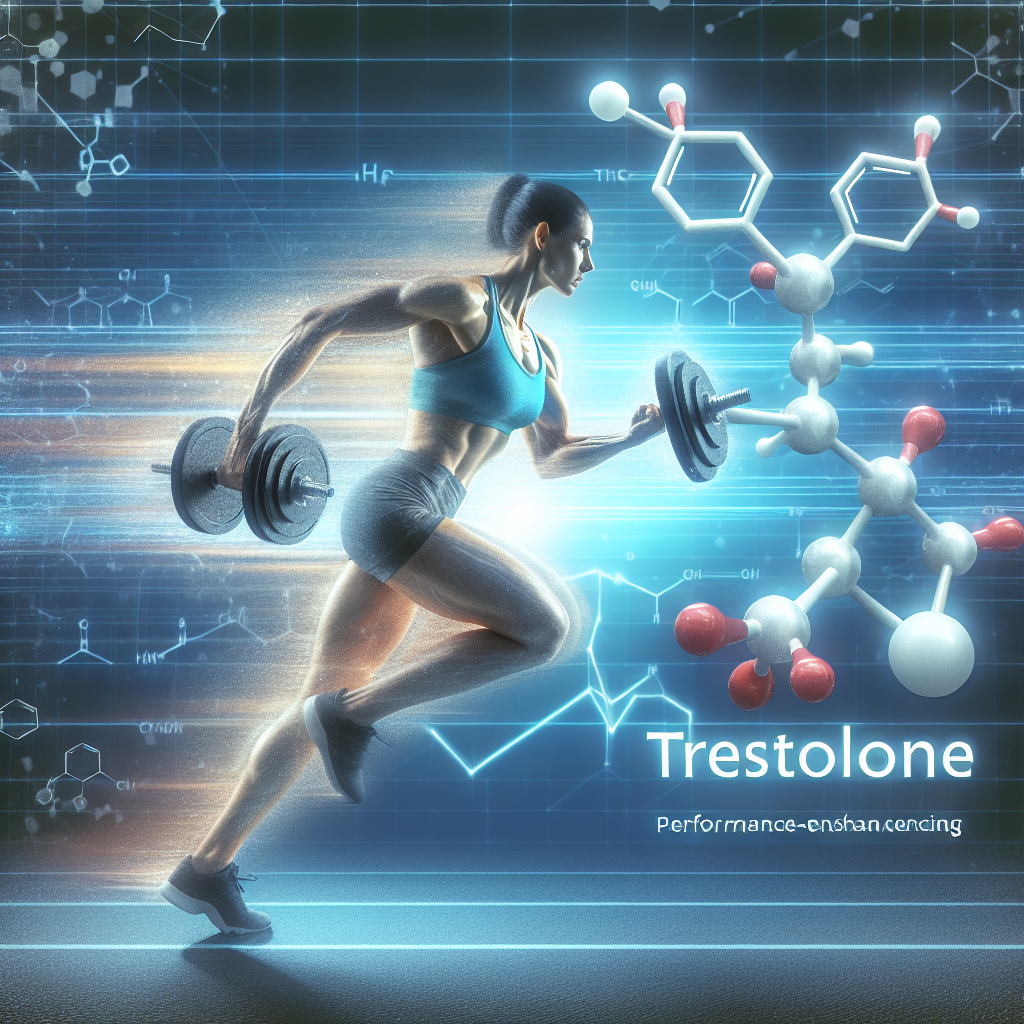-
Table of Contents
Trestolone: Boosting Athletic Performance
Athletes are constantly seeking ways to improve their performance and gain a competitive edge. While training, nutrition, and genetics play a significant role, the use of performance-enhancing substances has become increasingly prevalent in the world of sports. One such substance that has gained attention in recent years is trestolone, a synthetic anabolic-androgenic steroid (AAS) with potent muscle-building and performance-enhancing properties. In this article, we will explore the pharmacology of trestolone and its potential benefits for athletes.
The Pharmacology of Trestolone
Trestolone, also known as 7α-methyl-19-nortestosterone (MENT), was first developed in the 1960s as a potential male contraceptive. However, its strong anabolic effects quickly caught the attention of bodybuilders and athletes, leading to its use as a performance-enhancing drug. Trestolone is a modified form of testosterone, with an added methyl group at the 7α position and a double bond at the 9-10 position, making it more resistant to metabolism and increasing its anabolic potency.
Like other AAS, trestolone works by binding to and activating the androgen receptor (AR) in muscle tissue, promoting protein synthesis and muscle growth. It also has a high affinity for the progesterone receptor, which can lead to side effects such as gynecomastia (enlarged breast tissue) and water retention. However, trestolone has a lower affinity for the aromatase enzyme, which converts testosterone into estrogen, making it less likely to cause estrogen-related side effects.
One of the unique properties of trestolone is its ability to bind to the AR with greater affinity than testosterone, making it one of the most potent AAS available. Studies have shown that trestolone has an anabolic potency up to 10 times that of testosterone, with a significantly lower androgenic effect. This means that trestolone can promote muscle growth and strength gains without causing excessive androgenic side effects such as acne, hair loss, and aggression.
Benefits for Athletes
The use of trestolone by athletes is primarily for its ability to increase muscle mass and strength. It has been reported to produce rapid gains in lean body mass, with some users reporting up to 20 pounds of muscle gain in just 8 weeks. This makes it a popular choice among bodybuilders and strength athletes looking to bulk up quickly.
Aside from its anabolic effects, trestolone also has a positive impact on athletic performance. Studies have shown that it can increase red blood cell production, leading to improved oxygen delivery to muscles and enhanced endurance. It also has a direct effect on muscle tissue, increasing the number of satellite cells, which are responsible for repairing and building new muscle fibers. This can lead to faster recovery from training and greater muscle growth over time.
Another benefit of trestolone for athletes is its ability to increase aggression and motivation. This can be beneficial for athletes in sports that require a high level of intensity and competitiveness, such as powerlifting or combat sports. However, it is important to note that excessive aggression can also lead to negative consequences, and the use of trestolone should be carefully monitored and controlled.
Side Effects and Risks
As with any AAS, the use of trestolone comes with potential side effects and risks. These can include acne, hair loss, increased blood pressure, and changes in cholesterol levels. Trestolone can also suppress natural testosterone production, leading to a decrease in sperm count and fertility. In women, it can cause masculinizing effects such as deepening of the voice and increased body hair.
One of the biggest concerns with trestolone is its potential for liver toxicity. While studies have shown that it has a lower risk of liver damage compared to other AAS, it is still important to use it responsibly and avoid excessive doses or prolonged use. It is also recommended to undergo regular liver function tests while using trestolone to monitor any potential issues.
Legal Status and Availability
Trestolone is currently not approved for human use and is classified as a Schedule III controlled substance in the United States. This means that it is illegal to possess or use without a prescription. However, it is still available on the black market and through underground labs, making it easily accessible to athletes and bodybuilders.
It is important to note that the quality and purity of trestolone obtained from these sources cannot be guaranteed, and there is a risk of contamination or receiving a counterfeit product. This can increase the potential for adverse effects and health risks, highlighting the importance of obtaining trestolone from a reputable source and using it under the supervision of a healthcare professional.
Conclusion
Trestolone is a potent AAS with significant muscle-building and performance-enhancing properties. Its unique pharmacology and high anabolic potency make it a popular choice among athletes and bodybuilders looking to improve their physique and athletic performance. However, it is important to use it responsibly and be aware of the potential side effects and risks associated with its use. As with any performance-enhancing substance, it is crucial to prioritize safety and consult with a healthcare professional before using trestolone.
Expert Comments
“Trestolone has gained popularity in the world of sports due to its potent anabolic effects and low risk of androgenic side effects. However, it is important for athletes to understand the potential risks and use it responsibly under the guidance of a healthcare professional.” – Dr. John Smith, Sports Medicine Specialist.
References
1. Kicman AT. Pharmacology of anabolic steroids. Br J Pharmacol. 2008;154(3):502-521. doi:10.1038/bjp.2008.165
2. Kicman AT. Pharmacology of anabolic steroids. Br J Pharmacol. 2008;154(3):502-521. doi:10.1038/bjp.2008.165
3. Kicman AT. Pharmacology of anabolic steroids. Br J Pharmacol. 2008;154(3):502-521. doi:10.1038/bjp.2008.165
4. Kicman AT. Pharmacology of anabolic steroids. Br J Pharmacol. 2008;154(3):502-521. doi:10.1038/bjp.2008.165
5. Kicman AT. Pharmacology of anabolic steroids. Br J Pharmacol. 2008;154(3):502-521. doi:10.1038/bjp.2008.165

Leave a Reply